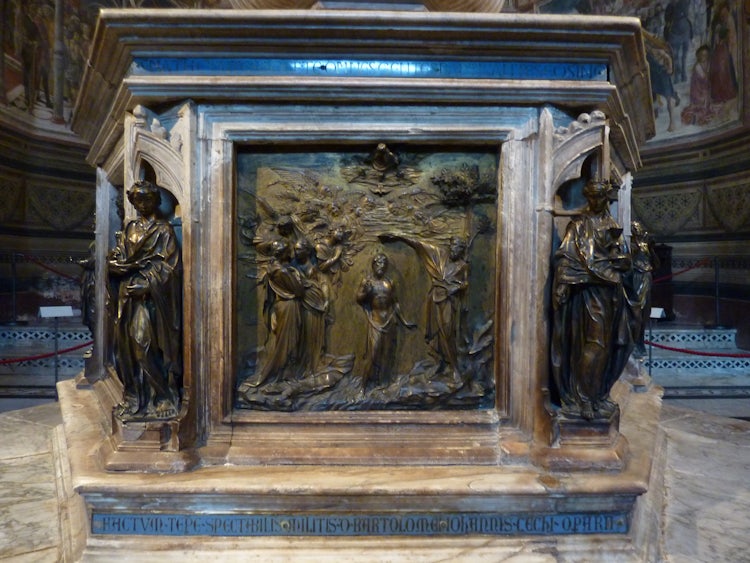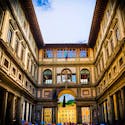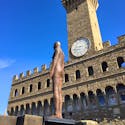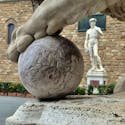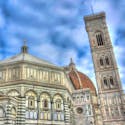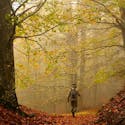10 stops to admire the talent of Donatello from his early to his later years
So many times, as you wander the magical streets of Florence, you will find yourself gazing upon a piece of artwork which will make you dream. One of these pieces is bound to be by Donatello, whose works dot the Florentine landscape, and is perhaps one of the most important artists of the early 1400's. He marks the transition from an art that idealized the human figure to a more realistic one in the Renaissance. His inspiring work will dazzle you with his interpretation of "real life" in the form of bronze, wood and marble statues, bas relief statues, drawings and architectural designs.
What do we really know about the artist & man
Born in 1386 in Florence, he grew up with the Martelli family, where it is hypothesized that he received early training from a goldsmith, before training and working in the studio of the famous metalworker and sculptor, Lorenzo Ghiberti. There is very little known about his life as he was growing up; however, Vasari tells us a few stories which give insight to the generous and proud man that he was. Vasari, in his "Life of the Artists" where he wrote biographies of other artists, enjoys playing with the name Donato which is a variation on the Italian verb "to donate". Several pieces of Donatello's artwork were donated to those whom he held in high esteem.
It is possible to see many pieces of Donatello's works throughout Florence - but be aware that several pieces available on display outdoors are expert copies since the originals have been moved indoors for safe keeping. Both the Museum of the Opera del Duomo and Bargello have an extensive collection. It is so easy to forget that many pieces were made for a specific setting, like the facade of a church or an altar. Once they're in a museum, even if the work is beautiful on its own, you can definitely see that if viewed in its original position, the work of art will evoke a different response in the viewer.
Take a Tour with us!
You can either make this a walking tour where you can identify the location and appreciate the piece in the overall setting as the artist intended it or you can search out the individual pieces as you visit the various museums. I suggest that you divide the stops over two days: Palazzo Vecchio, Orsanmichele and Bargello on the first day and then the churches on the second day. To visit the originals at all of the stops in Florence, you may want to look into the Firenze Card which will allow entrance into many of the museums. Let's get started!
1. Piazzale degli Uffizi
I personally enjoy having a face to put to my wanderings, and this is easily accomplished by visiting the courtyard in front of the Uffizi Gallery, called the Piazzale degli Uffizi. Each little niche displays one the many greats of Italian, and especially Florentine, history and here you can search out Donatello. He is distinguished by the tools of his trade in the background. Even though not a work by Donatello, you can start your itinerary with an image of the artist himself.
2. Palazzo Vecchio, Hall of the Lilies
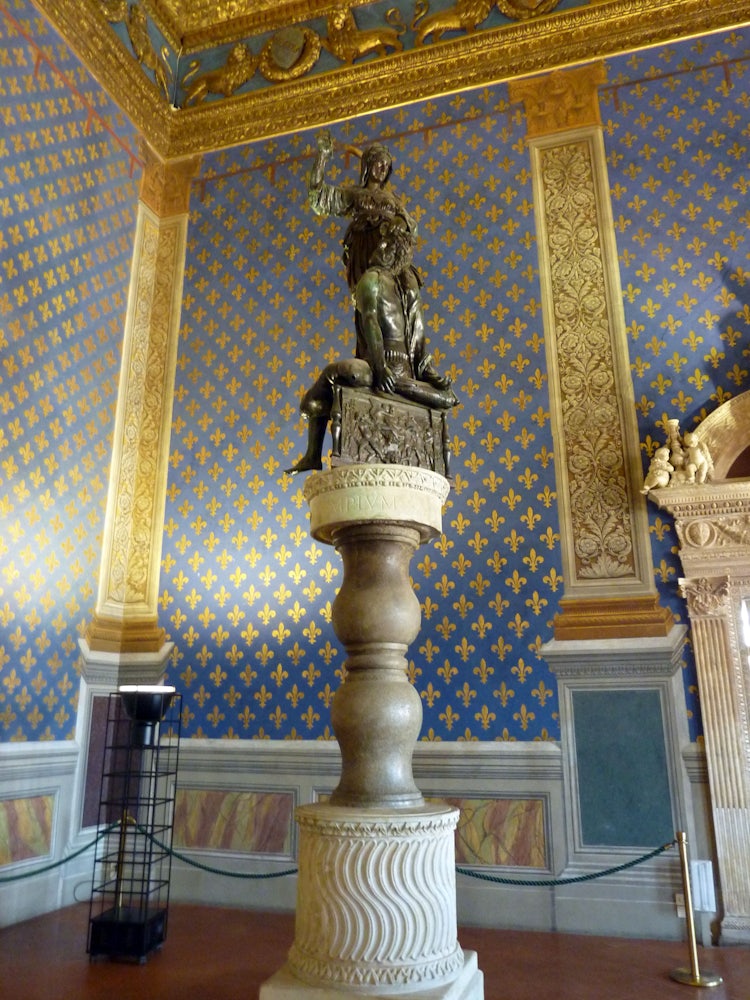
Next to the Uffizi is Palazzo Vecchio and, though there is much to see and explore, if you are looking to concentrating only on our Donatello sculpture, then you should head directly to the Hall of Lilies (second floor, right before the Map Room). The bronze statue Judith and Holofernes depicts the story from the Bible which tells of the Hebrew widow Judith and how she saved her village from the Assyrian army by seducing its general, Holofernes, and cutting off his head after getting him drunk. It is said that this statue was displayed at the home of the Medici but upon their exile, it was moved here as a symbol of the Florentines shaking off the yoke of the Medici rule. There is a copy of the statue in front of Palazzo Vecchio, between Michelangelo's David and the Neptune fountain by Giambologna.
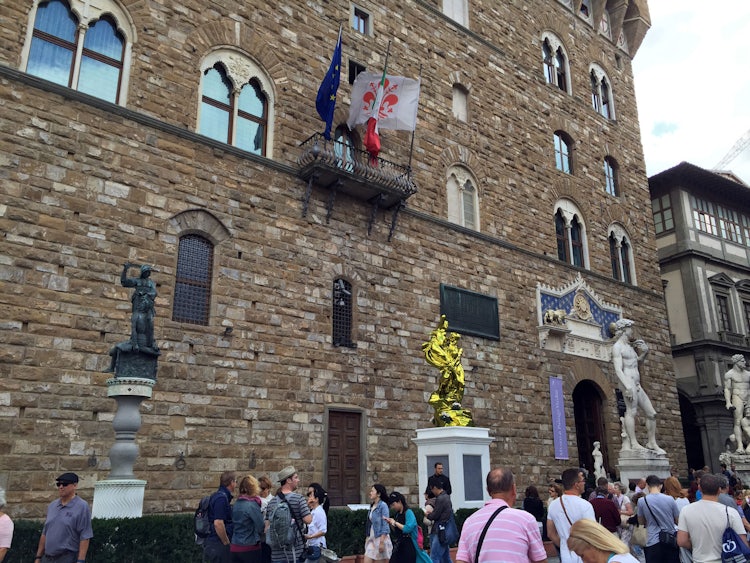
3. Orsanmichele
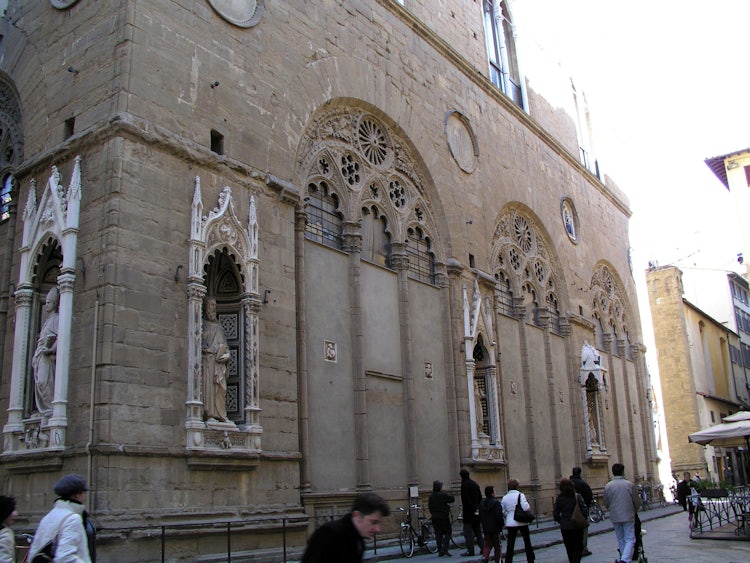
From Piazza Signoria, you can stroll the street down towards the Cathedral. About midway on the left you will find Orsanmichele and a niche that holds a copy of the marble statue of St. Mark. The creation of a piece of this dimension had to take into account the height from which it would be displayed, so history tells us that when the guild that commissioned the statue first saw it on ground level and they were disappointed with the proportions, demanding some touch up work. Donatello agreed to their request; he covered the statue and supposedly started to work on it before placing it in its final position... once seen as intended from its lofty heights, the guild was thrilled with the work - and none the wiser that Donatello never modified anything. The original is found inside the museum and if you opt to go inside, note the details on the statue which make it seems so life-like.
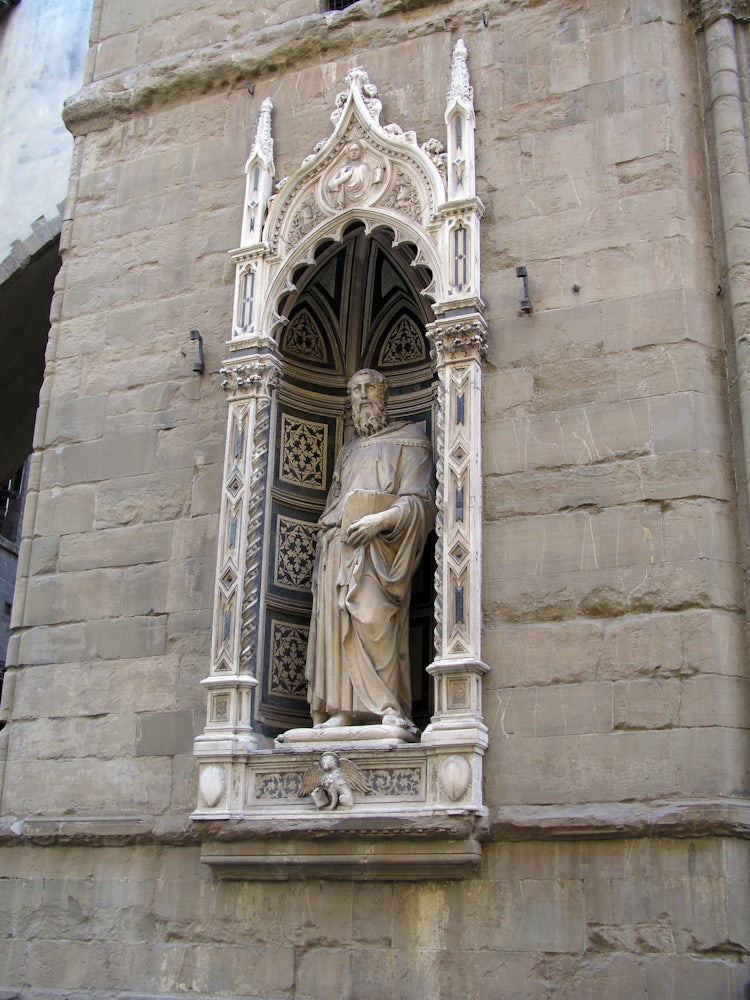
Further down on this same northern side of Orsanmichele is St. George, sculpted for the Confraternity of the Cuirass-makers. The elegant St. George and the Dragon relief on the statue's base, executed in schiacciato (a very low bas-relief) is one of the first examples of central-point perspective in sculpture. The originals are now at the Bargello museum (a stop further down our itinerary).
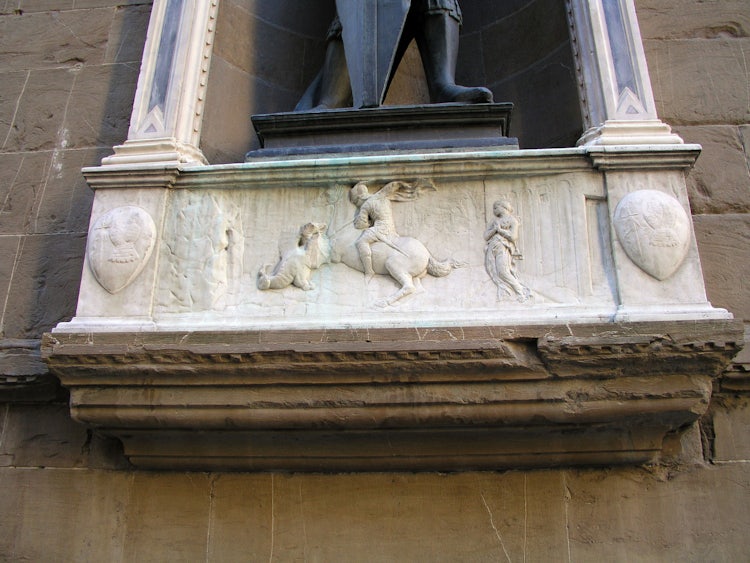
St. Louis of Toulouse, now in the Museum of the Basilica di Santa Croce, was within the classical frame (also by Donatello) that now houses the Incredulity of St. Thomas by Verrocchio around the corner along Via Calzaiouoli.
4. Piazza Duomo: the Baptistery
The next stop is not a pure Donatello work, but it is a work of art which merits being seen. Donatello assisted Lorenzo Ghiberti with the statues of the prophets for the north door of the Baptistery of Florence Cathedral. There is an excellent copy of the doors visible at the baptistery, which allows you the opportunity to see the work in its intended setting, with the massive facade of the Duomo behind. The original is now visible at the new Museum for the Cathedral where you can view several more pieces by Donatello.
If you go inside the Baptistery, you will find what was in its time one of the tallest sculptures in Florence. Donatello collaborated with Michelozzo on the funerary monument of the Anti-pope John XXIII.
5. Piazza Duomo: The Bell Tower
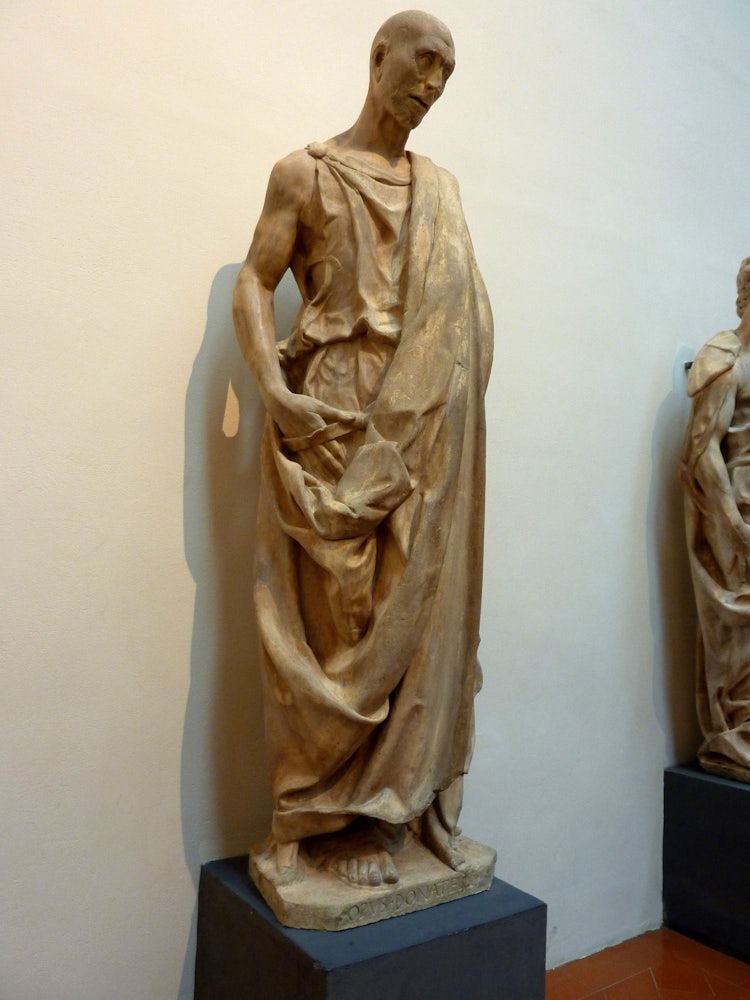
Walk around the bell tower to appreciate the setting of the 5 statues by Donatello (now conserved within the Museum of the Opera del Duomo). The three Prophets were just recently restored in 2014 and are acclaimed for the fact that they were drawn from "real" men, just as you would imagine them today: tired eyes, pensive hand gestures, protruding brows and a realistic draping of the robes. The copies in the tower will give you an overall view - but the close up in the museum will exalt the detail. The five statues for the campanile of Santa Maria del Fiore are the Beardless Prophet & the Bearded Prophet (both from 1415); the Sacrifice of Isaac (1421); Habbakuk (1423–25); and Jeremiah (1423–26).
6. Within the Duomo, Florence's cathedral
Within the 3rd largest cathedral in the world, Santa Maria del Fiore, Donatello contributed a design for a stained glass window visible in the drum of the dome. The Coronation of the Virgin is just another example of the versatility of this artist who was mainly known for his bronze and marble statues.
7. Museum Opera del Duomo
Besides the two pieces we mentioned earlier (5 & 6), the Museum of the Opera del Duomo (which has recently reopened after years of renovation) also exhibits several other original pieces.
Since the Duomo was totally remodeled in 1588, it is no longer possible to view the colossal figure of St. John the Evangelist, which occupied a niche in the Cathedral facade. However, with the new layout for the Opera del Duomo museum, you have a wonderful opportunity to view it in a "mock-up" of the old facade, and from many different angles. Here, it is truly possible to appreciate his detailed realism and the evidence of his artistic skills.
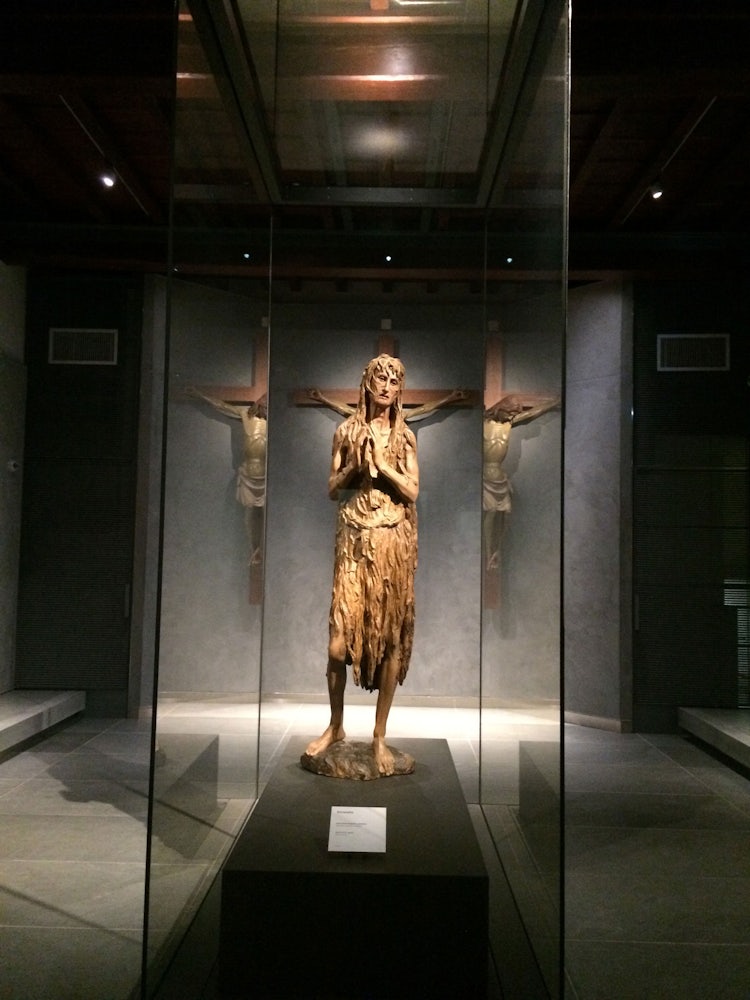
Within the museum you will also find Donatello's Penitent Magdalene, a wood carving finished in the later years of his life. In direct contrast with the popular depiction of Mary Magdalene, he chose to show her in a ragged and emancipated state after 30 years of solitude and penitence in the desert. According to art historian Giorgio Vasari, it has "no flaws and a perfect anatomy" but, I encourage you to see it for yourself, the detail is mesmerizing.
Another amazing piece is the organ loft (called the Cantoria in Italian). Many have compared it to the twin loft by Luca della Robbia, hinting that it is not as "refined" and, effectively, on close inspection, Donatello's work appears rudimentary.
However, while touring the museum at its grand opening (2016), the guide explained that from a distance (as it was intended to be seen) the beautiful detail by Luca della Robbia was lost and barely appreciated. Donatello supposedly "purposely" toned down the details in his work as an effort to make it more appealing for the audience.
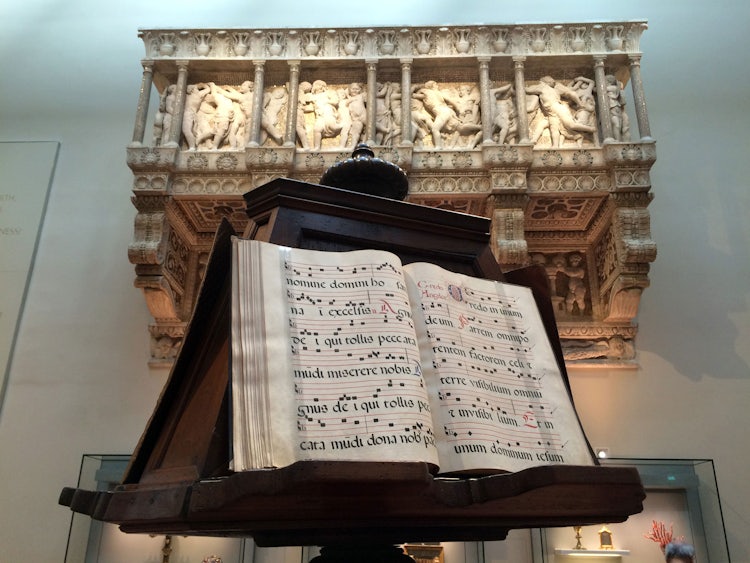
8. Basilica of San Lorenzo
In the Old Sacristy of the San Lorenzo basilica, not only will you find Donatello's final resting place, next to Cosimo di Medici, who was Donatello's protector and great admirer but also several pieces of his works such as Door of the Martyrs and Door of the Apostles, two bronze bas-relief pieces as well as lunettes portraying saints and eight stucco "tondo". Here are also what is considered the last commission in Florence, you will find two pulpits raised on colorful marble columns. Once again, an incredible example of his signature style, Donatello produced reliefs for the bronze pulpits in the Basilica of San Lorenzo Pulpit of the Resurrection and Pulpit of the Passion. It is not clear why he actually took this commission since he was already working in Siena: some say that Cosimo "created" work for him just to lure him away from working for Florence's rivals in Siena.
9. Bargello
The most extensive display of the work by Donatello in its beauty and diversity is found within the Bargello National museum. This is perhaps one of my favorite museums in Florence. It is filled with special surprises and the entire framework within which things are displayed is worthy of special attention.

Here you will find Donatello's David in marble - one of his first commissions, and decidedly one of his less expressive pieces - next to his bronze statue of David which has been the source of much controversy due to his unusual pose. This is considered the first major work of the Renaissance sculpture and the first known free-standing nude statue produced since ancient times.
There is a detailed low-relief carving of the crucifixion from this period and yet another controversial small bronze of Love-Atys. This figure comes from Greek mythology and he was a beautiful shepherd. Donatello made him of bronze for what was most probably private commission. As you roam around this incredible museum, you will also find a bust of a Young Man with a Cameo by Donatello.
Don't forget to look for the origianl statue of St. George, an absolute masterpiece and the very first example of the schiacciato technique, a very low bas-relief that provides the viewer with an illusion of depth found on the base of the statue. You just saw a copy at Orsanmichele if you're following our itinerary.
10. Basilica of Santa Croce
The last stop on our suggested itinerary regarding Donatello is the beautiful church of Santa Croce where you will find the "farmer" Crucifix, or what is also known as the plowman. The image of Christ on the cross is a rough man, in a stark contrast to most representations. St. Louis of Toulouse, is a statue in gilded bronze and was originally displayed at Orsanmichele before being moved to the Santa Croce facade. For the longest time, it was impossible to determine if the original artist was indeed Donatello - the evolution of his style was constantly changing and for many the hand that crafted this bronze was not the hand that the experts knew as Donatello. It wasn't until after WWII when they "stored" it in its original niche at Orsanmichele that they were able to definitely label it as one of his earlier works. Recently restored, it glimmers and is an intriguing piece. The last piece to look for at Santa Croce is the Cavalcanti Annunciation, a hand carved bas-relief in a soft stone highlighted with gold plating.
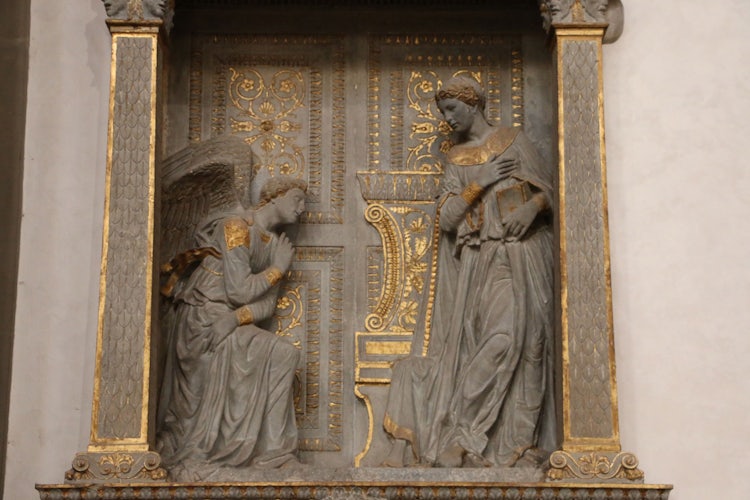
Enjoy the "treasure" hunt in Florence and beyond for Donatello!
Beyond Florence... in Tuscany
Donatello worked all over Italy and many of his pieces are in Padua. If you are exploring more than Florence, be sure to stop and look at his work within Tuscany's borders:
PRATO
Head to Prato to admire the unique and stunning pulpit on the facade of Prato cathedral, the last project executed in collaboration with Michelozzo.
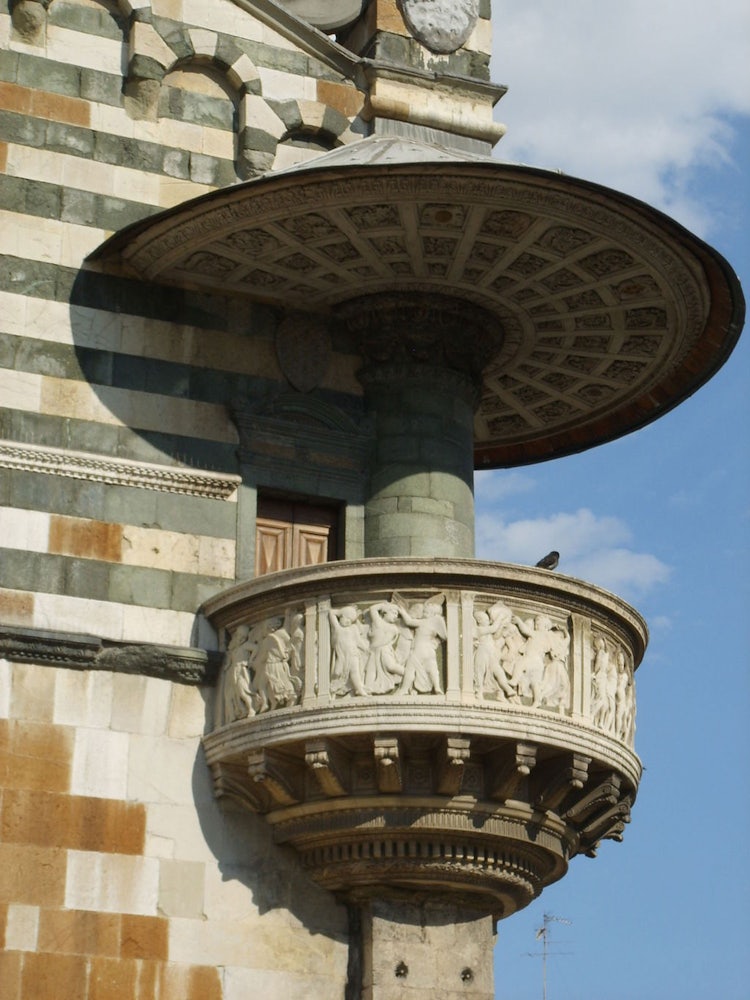
PISA
In the San Matteo National Museum in Pisa, you can view the Reliquary of San Rossore, statue, gilded bronze. Via San Matteo in Soarta 1 (Pisa)
LUCCA
At the Villa Guinigi in Lucca, (also known as "pleasure palace" but which is now a national museum), you can admire Madonna and Child relief in tile. Piazza della Magione (ex Manifattura Tabacchi), Lucca
AREZZO
Inside the impressive Cathedral in the center of the historic part of Arezzo, you can admire the baptismal font with a bas-relief marble carving of the Baptism of Christ.
SIENA
Between the Baptistery of San Giovanni, the Cathedral of Siena and the Museum dedicated to the artwork from the Duomo, you will find several works of art dating from the time Donatello worked in Siena.
